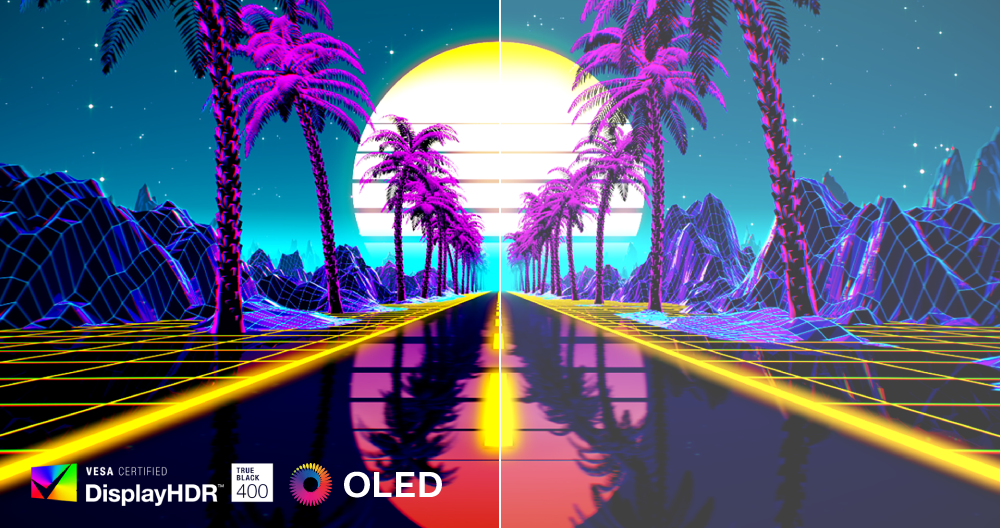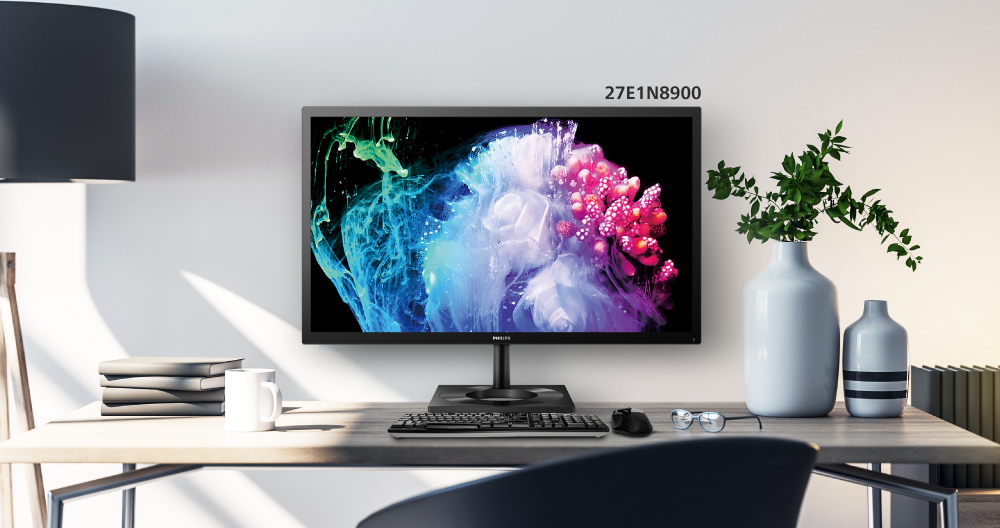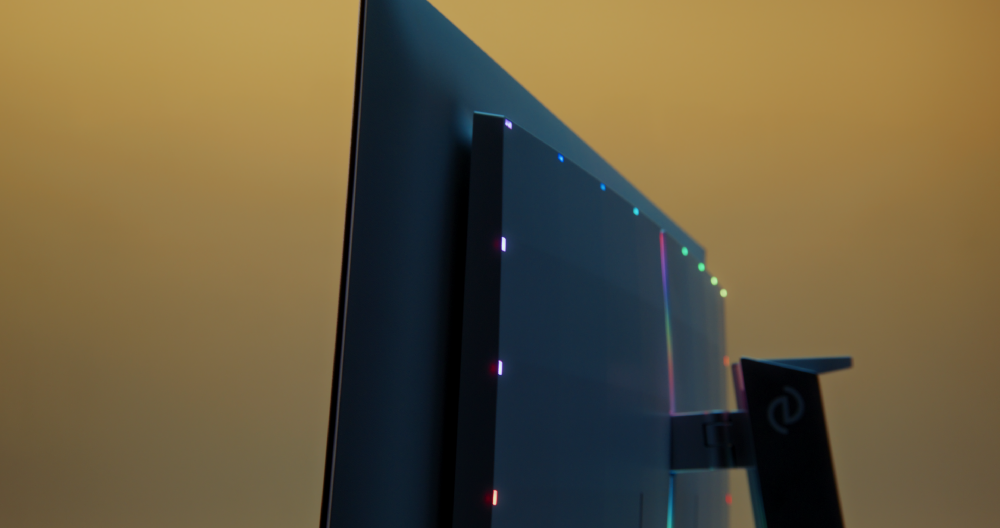![]() 2023/03/10 | MMDInnovationHub
2023/03/10 | MMDInnovationHub
Have you ever sat in front of a monitor, and you were at some weird angle, yet the images onscreen were just as sharp and clear?
You're likely viewing an OLED display. OLED - Organic Light Emitting Diode - is a lighting technology where the monitor is full of self-illuminating pixels.
The importance of black
Each pixel is controlled individually and emits its own light. Each EL element can be ON/OFF as needed. When it is Off, it displays perfect black (jet black). There a no light leakage. It also accurately displays color fineness with a contrast ratio of 1,000,000:1 for darker blacks and brighter whites.
The black level - the darkest a display can go (purely black is ideal) - is critical to enhancing color vibrancy. Images appear flatter, washed out, with weaker colors when the black level is grayish or milky.
 A monitor using Organic Light Emitting Diode or OLED technology will likely have darker blacks that help improve contrast to produce brilliant colors.
A monitor using Organic Light Emitting Diode or OLED technology will likely have darker blacks that help improve contrast to produce brilliant colors.
Why do images remain vivid even when the viewer sits at odd angles from the monitor? Because there is no reduction in color and brightness since pixels are programmed to turn on or off depending on the colors displayed onscreen.
No backlight
The main difference between OLED and its precursor, LED, is the absence of backlighting. LCD, which came ahead of LED, also had built-in backlight but used liquid crystals instead of light emitting diodes.
Minus the backlight setup, the OLED display is much thinner. While LED panels are not shabby, some even come with 4K resolution, the trend is slowly shifting to panels without backlighting.
Several monitor models still use LED panels, especially for use in very bright surroundings. It provides adequate image quality for people who use these mainly for text-heavy materials and graphics that are not detail-sensitive.
But with OLED monitors becoming more affordable and gamers seeking a truly immersive experience while playing, OLED is the way to go.
 Philips Monitors 27E1N8900, an OLED display, provides eye-popping visuals.
Philips Monitors 27E1N8900, an OLED display, provides eye-popping visuals.
Three models designed for gamers
Always in step with changing monitor technology, Philips Monitors offers three models using OLED technology.
Two of these are under our new gaming brand, EVNIA. The 34M2C8600 and 42M2N8900 not only cater to hard-core gamers but also to that market segment who want a fresher look for their monitors to make playing video games more enjoyable and inclusive.
One of the brand’s distinct features is the Ambiglow technology, which creates a halo of light from the monitor to enhance the mood and content flashed onscreen. This offers an immersive experience and makes it seem like the screen is larger than it is.
Throw in the UltraWide Color Technology, which provides a broader spectrum of colors, and gamers will have that elevated gaming experience. Both EVNIA models feature this technology.
VESA-certified displays
A feature shared by the 27E1N8900 with 34M2C8600 is the DisplayHDR™ True Black 400 standard certification from VESA, not only for compliance with standards specifying HDR quality to ensure it displays brilliant colors but, more importantly, deep blacks that highlight visuals on screen for a more lifelike appearance.
For resolution, the 34" curved monitor is UltraWide Quad HD (3440 x 1440px) for Crystal Clear images and wide-angle viewing. With a 21:9 aspect ratio, the display allows multiple viewing on a single screen for multi-tasking, which results in higher productivity.
And it goes a step beyond OLED as it uses the hybrid technology QD OLED, for quantum dot OLED. This means increased contrast, even darker blacks, and higher peak brightness that can only result in even more dazzling pictures.
Like the 27" display, the EVNIA 42" monitor also has a 4K UHD resolution (3840 x 2160px), so it's not for gamers alone. Professionals in graphics, video production, or CAD will appreciate this model, too.
 Other than using OLED panels, EVNIA models boast of Ambiglow technology that personalizes the playing experience even for non-hardcore gamers.
Other than using OLED panels, EVNIA models boast of Ambiglow technology that personalizes the playing experience even for non-hardcore gamers.
It also has a True 10-bit color display for exceptional color accuracy for a more natural transition between hues resulting in smoother gradients, a feature it shares with the other EVNIA model.
And since EVNIA is a gaming brand, the 42M2N8900 boasts a low input lag, reducing the time delay between commands and execution to improve play and gain an edge over competitors.
OLED displays are not for gamers only. Users who demand color accuracy, sharp images, and vibrant images will find this monitor well worth it.